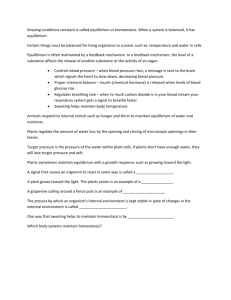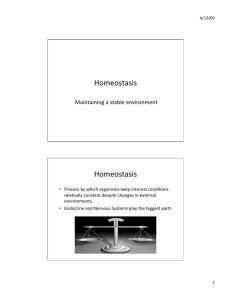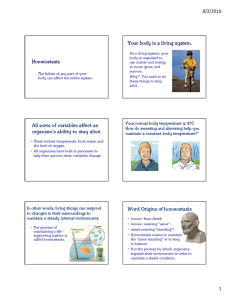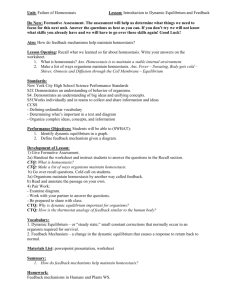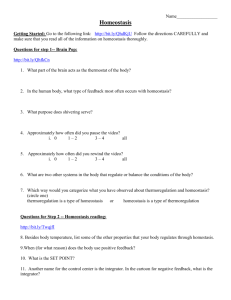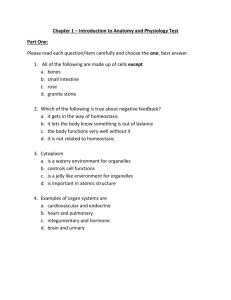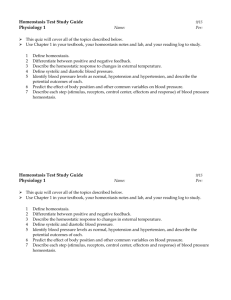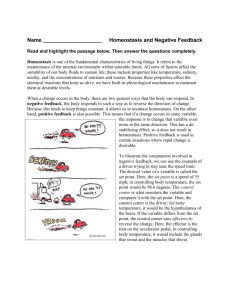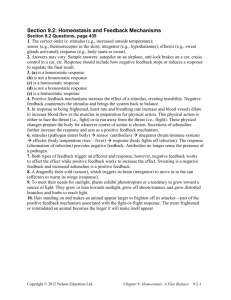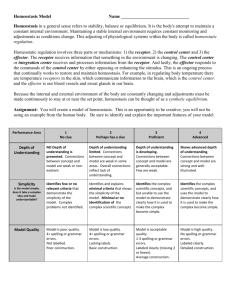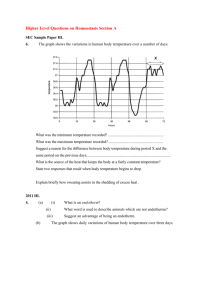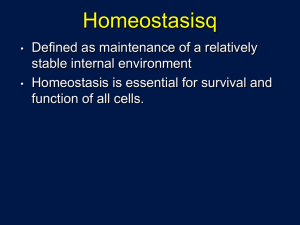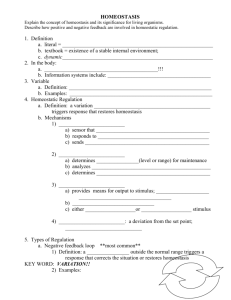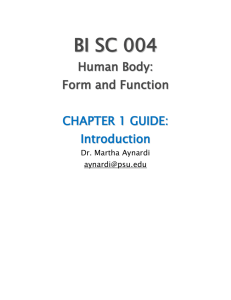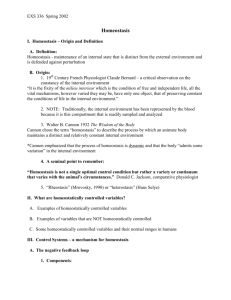B2U3 notes homeostasis
advertisement
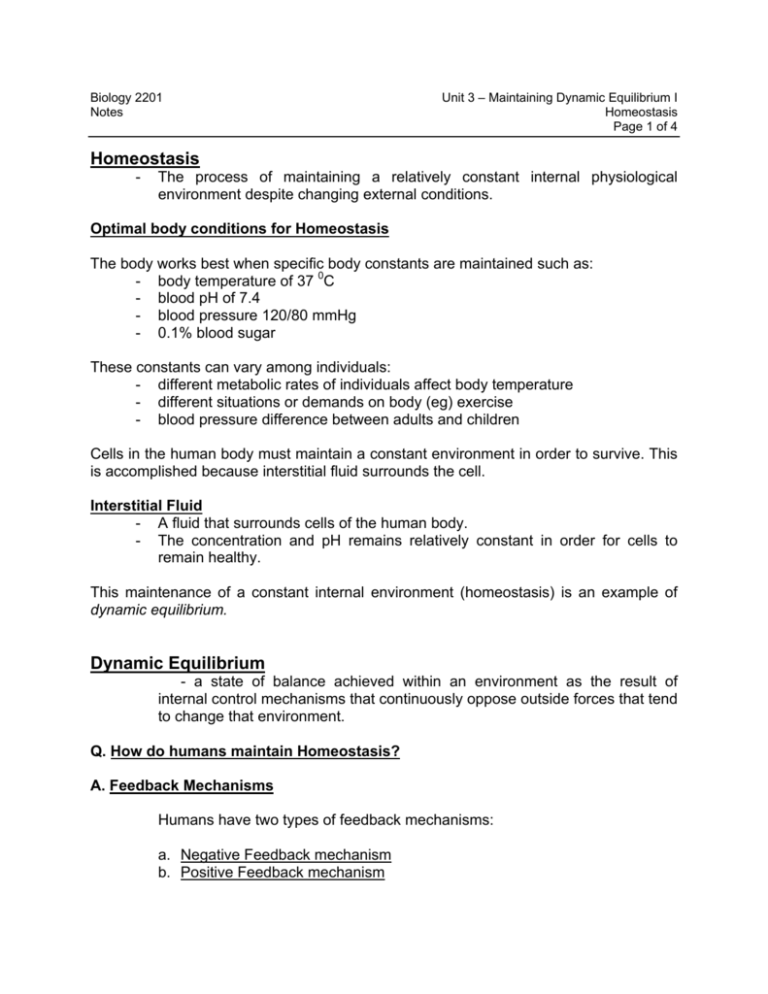
Biology 2201 Notes Unit 3 – Maintaining Dynamic Equilibrium I Homeostasis Page 1 of 4 Homeostasis - The process of maintaining a relatively constant internal physiological environment despite changing external conditions. Optimal body conditions for Homeostasis The body works best when specific body constants are maintained such as: - body temperature of 37 0C - blood pH of 7.4 - blood pressure 120/80 mmHg - 0.1% blood sugar These constants can vary among individuals: - different metabolic rates of individuals affect body temperature - different situations or demands on body (eg) exercise - blood pressure difference between adults and children Cells in the human body must maintain a constant environment in order to survive. This is accomplished because interstitial fluid surrounds the cell. Interstitial Fluid - A fluid that surrounds cells of the human body. - The concentration and pH remains relatively constant in order for cells to remain healthy. This maintenance of a constant internal environment (homeostasis) is an example of dynamic equilibrium. Dynamic Equilibrium - a state of balance achieved within an environment as the result of internal control mechanisms that continuously oppose outside forces that tend to change that environment. Q. How do humans maintain Homeostasis? A. Feedback Mechanisms Humans have two types of feedback mechanisms: a. Negative Feedback mechanism b. Positive Feedback mechanism Negative Feedback Mechanism - A process that detects & reverses deviations from normal body constants. involves three parts: 1. receptor 2. integrator 3. effector Sensory Receptor: - found throughout every body organ & tissue. - Receptors send nerve impulses (stimuli) to the brain in response to environmental information. - Sensory receptors monitor the body’s internal conditions. Integrator: - located in the brain (hypothalamus). - Sends messages to the effectors. Effector: - These are structures that carry out changes in the body. - These are muscles and glands. - Messages can be transmitted by nervous system or by chemical messengers known as hormones. Biology 2201 Notes Unit 3 – Maintaining Dynamic Equilibrium I Homeostasis Page 3 of 4 Positive Feedback Mechanism - A mechanism that acts to increase the strength of a stimulus. Positive feedback mechanisms pushes a system away from balance and stability. These are usually associated with disease or change example: high blood pressure Temperature Regulation – An example of Negative Feedback Homeotherm - An organism that maintains a relatively constant body temperature. - Example: mammals (humans) & birds Poikilotherm - An organism whose body temperature fluctuates depending on temperature of the animal’s environment. - Example: cold blooded animals How is body temperature maintained in Humans? The human body generates heat as a by-product of metabolic processes & uses several different mechanisms to control the rate at which heat is lost through the skin. The human body uses TWO mechanisms by which it controls body temperature. a. Behavioural mechanisms These are changes in behaviour that a person in order to control temperature (e.g.) put a sweater on when cold. Take off a sweater when warm. b. Physiological mechanisms These are changes in the body that help to control temperature. (eg) circulatory system Types of Physiological Mechanisms in humans 1. Vasoconstriction Blood vessels constrict in diameter thereby reducing the amount of blood that travels through. This helps to conserve heat and raise temperature. 2. Vasodilation Blood vessels increase in diameter thereby increasing the flow of blood through. This helps to release heat and lower temperature.

